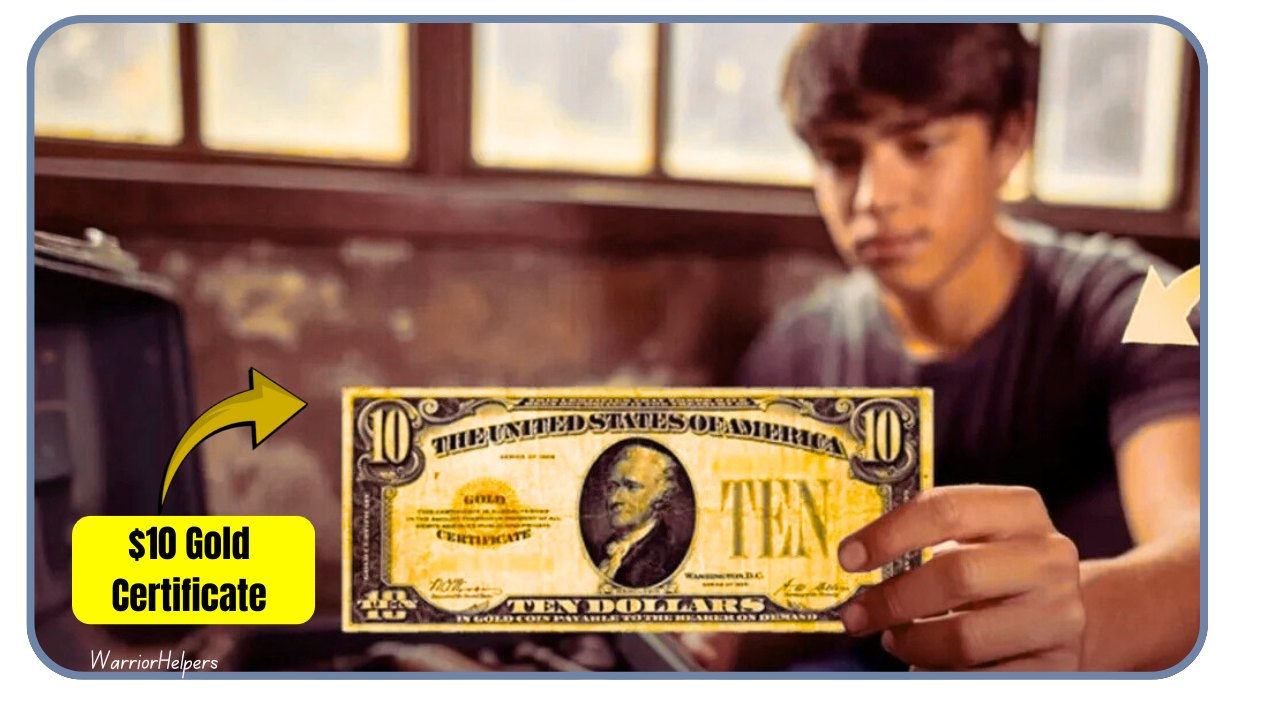A teenager in Texas got the surprise of a lifetime when he opened his grandpa’s old toolbox and found a $10 gold certificate from 1928. Tucked between rusty screws and worn-out wrenches, this faded piece of paper could be worth up to $25,000. Gold certificates, once used as money backed by real gold, are super rare today and have collectors buzzing with excitement. This teen’s discovery is sparking a frenzy among currency hunters, and it’s a reminder to check your family’s old stuff for hidden treasures. Here’s what makes this find so special and how you can spot one yourself.
What Is a Gold Certificate?
Gold certificates were special U.S. paper money issued from the 1860s to the 1930s, redeemable for gold at banks. They feature bright gold-colored seals and designs, making them stand out from regular bills. The $10 gold certificate, like the one found in the toolbox, often shows Alexander Hamilton’s portrait. The U.S. stopped printing them in 1933 when it ended the gold standard, so very few are left. Collectors love them, especially the 1928 series, because so few were printed. A well-preserved $10 gold certificate from that year recently sold for $22,000 at auction.
Why Is This $10 Bill So Valuable?
The value of a gold certificate depends on its year, condition, and unique features. The 1928 $10 gold certificate is a hot item because only a small number were made before the government stopped issuing them. A low serial number, like 00000001, or a star symbol (★) in the serial number can make it worth even more. The teen’s bill has a clear gold seal and only light wear, which could push its value to $10,000 or higher. If it’s in near-perfect, uncirculated condition, it might fetch close to $25,000.
|
Feature |
What to Look For |
Potential Value |
|---|---|---|
|
Series Year |
1928 or 1900 |
$1,000 to $25,000 |
|
Serial Number |
Low numbers (e.g., 00000001) or star (★) |
Up to $30,000 |
|
Condition |
Crisp, no tears or heavy folds (Uncirculated) |
Highest value |
|
Gold Seal |
Bright, clear gold-colored seal |
Increases value |
How to Spot a Valuable Gold Certificate
You don’t need to be a pro to find a valuable gold certificate. Check for a gold-colored seal and the words “Gold Certificate” on the bill’s front. Look at the series year—1928 is a key one for $10 bills. Examine the serial number for low digits, repeating patterns like 11111111, or a star symbol. The bill’s condition matters a lot: no tears, stains, or heavy creases mean more money. If you find one, handle it gently with clean hands or gloves to avoid damage, and store it in a plastic sleeve until you can get it checked by a professional.
Where to Find These Hidden Gems
Gold certificates often turn up in unexpected places, like old toolboxes, family safes, or forgotten drawers. The Texas teen found his in his grandpa’s toolbox, but others have discovered them in old books, wallets, or even under mattresses. Ask older family members if they’ve saved old money from decades ago. Estate sales, flea markets, or antique shops are also great spots to look—someone might not know what they have. If you find a gold certificate, take it to a trusted coin shop or currency dealer for an appraisal. Websites like Heritage Auctions can also give you a sense of its value.
Could You Have a Treasure Waiting?
This teen’s lucky find shows that treasures can hide in plain sight. A $10 gold certificate worth thousands was just sitting in a toolbox, waiting to be discovered. Even if it’s not worth $25,000, a gold certificate could still bring in $1,000 or more—enough for a new phone, a trip, or a boost to your savings. Stories like this prove it’s worth checking old family keepsakes or dusty corners of your home. So, dig through your attic, basement, or grandpa’s old stuff. You might just find a rare bill that turns into a big payday!
